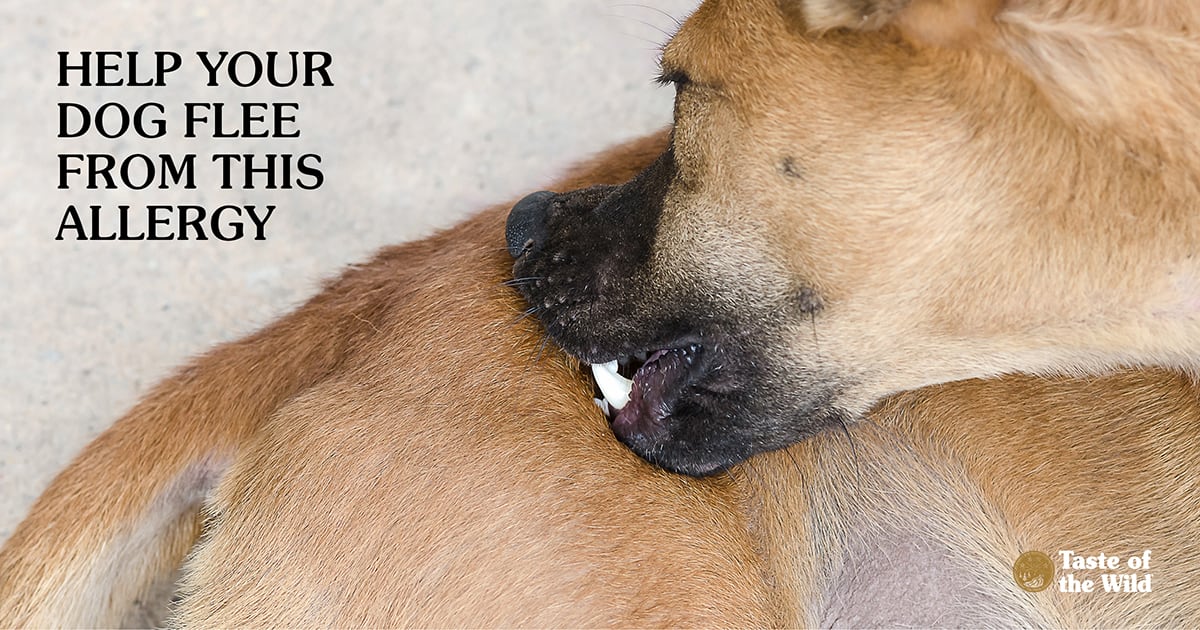
The mere mention of fleas is enough to make you feel itchy all over. Now double that and you might know how your dog or cat feels when flea season hits. The mere presence of fleas can make a dog or cat itchy, but for pets who are allergic to fleas, it’s even worse: a single bite can lead to a severe reaction called flea allergy dermatitis (FAD).
Know the Signs of a Common Allergy
Of all the allergies dogs and cats can have, flea allergy is among the most common. In this case, pets are sensitive to the flea saliva. And they don’t have to be infested with fleas to have a reaction. One thirsty flea can send a pet into paroxysms of itching and scratching that can keep them busy for days.
To relieve the itch, pets will scratch, lick, bite and even partake in some “corn cob” nibbling in rows on their skin. In dogs, skin reactions are often seen along the lower back, thighs, lower abdomen and forelegs. Cats typically focus on the lower back, tail, head and neck. Some pets are so miserable, they’ll literally scratch or lick themselves bald in these areas.
All that activity further irritates the skin and can create openings where bacteria and yeast can enter, leading to secondary infections. Over time, the skin can become thickened and hyperpigmented, or darker, from chronic irritation.
What Pets Are Affected?
Outdoor pets and those who frequent parks or daycare, boarding and grooming facilities have more exposure to wildlife or other pets with fleas, so they may be more often affected. Although FAD rarely occurs in pets under the age of 6 months, those who are 3 to 6 years old may be more commonly affected, but pets of any age may experience FAD. Those who are prone to other types of allergies may also have FAD.
Reaching a Diagnosis
It’s not always easy to spot fleas on your pet. A flea comb may help turn them up or show evidence of flea dirt (feces), or black specks on your pet’s skin. Not sure if it’s flea dirt? Place the specks on a wet paper towel, and the digested blood in the droppings will turn the paper towel red.
Your veterinarian can help determine if your pet has fleas. They may also recommend allergy testing to see if your pet is reactive to fleas or other allergens. Even if no fleas are found, treatment may be recommended anyway. If a pet responds to treatment, a presumptive diagnosis of FAD can be made.
Keeping Fleas at Bay
Since pets with FAD are hypersensitive to any level of flea infestation, flea avoidance is crucial. That means transitioning outdoor pets to becoming indoor-only pets and working to eliminate fleas from the indoor environment. Since existing fleas have most likely shed eggs into the home, it can take three months or more to clear the household of these pests. Your veterinarian can offer suggestions on how to clean up the environment.
Your pet will also need topical and/or oral flea preventives. And remember, fleas are equal-opportunity pests. The same fleas that bite cats are just as happy to camp out on dogs. So if one pet in the household has fleas, all pets need flea treatment.
Pets with FAD may need other treatments to help soothe irritated skin and treat secondary infections. These may include topical shampoos, sprays and lotions, as well as oral antibiotics, antifungals, steroids, antihistamines or other medications.
Even if your pet isn’t allergic to fleas, they can still make them miserable. Fleas not only cause discomfort but can transmit disease-causing agents, such as tapeworms and the bacteria that lead to cat scratch disease. If you’re concerned about your pet, your veterinarian is the best resource to help bring them some relief.
RELATED POST: Everything You Need To Know About Flea Protection
The information in this blog has been developed with our veterinarian and is designed to help educate pet parents. If you have questions or concerns about your pet's health or nutrition, please talk with your veterinarian.
